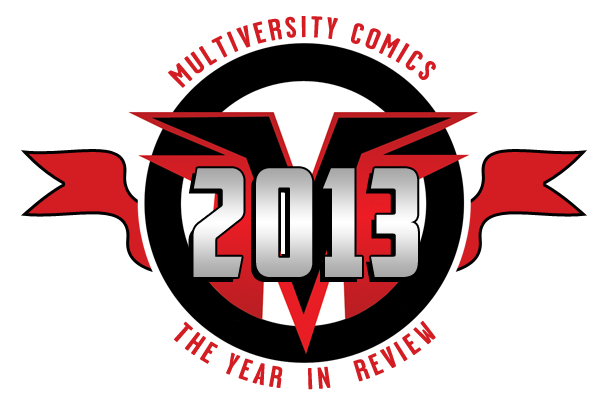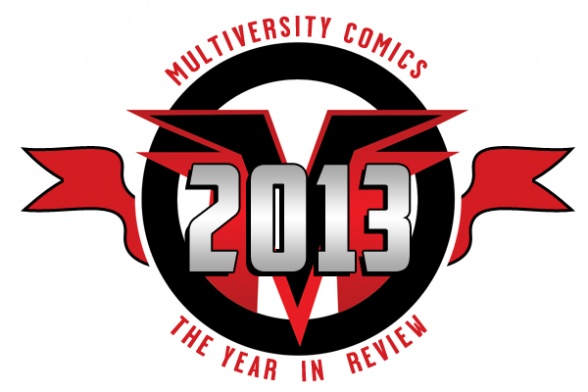
2013 in Review continues, as today brings our favorite minis of the year. It was a big year, with many creators seemingly embracing minis once again (2014 looks even more pushed in that direction), and big name creators popping up and producing some of the absolute finest comics of the year just in finite form. But there can only be one…number one. What was it? Find out below, and as per usual, share your picks in the comments.
Reminder: our ranks are created by Multiversity’s staff sharing individual lists, and them being aggregated into a master list for each category. This is the result of that.
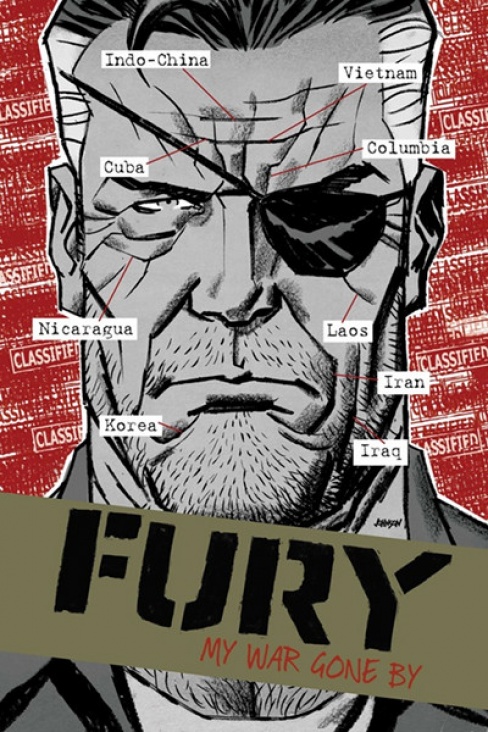
10 (tie). Fury MAX
Why It Ranks (David Harper): This book was not read by many around Multiversity’s offices, which really blows my mind. This was one of the best comics of 2013, and one of the best works of Garth Ennis and Goran Parlov’s careers, telling a brilliant story of a man’s life who was made and broken by war. All of the characters in it, namely Fury and Shirley DeFabio, find their lives build and build thanks to their relationship with war, but by the end of it in this year’s thirteenth issue, we’re shown the darker side of their lives, with each and every one of them ending in tears or worse. It’s a dark, heartbreaking story, but it doesn’t pull punches in its utter realism. It’s unforgiving, but only in the ways great art should be.
Speaking of great art, Goran Parlov provided some of the most underrated, unheralded work of the year, and for those that are excited to see his work in 2014’s “Starlight”, I highly recommend reading this. Even if you aren’t and you just like great comics – or just war stories – this is a book that should be added to your reading list.

10 (tie). The True Lives of the Fabulous Killjoys
Why It Ranks (Mike Romeo): The True Lives of the Fabulous Killjoys is the story of a dystopian future, as told with a fashion punk sensibility. It’s part 80’s action flick, part coming of age story, this comic is outrageous, and scratches a lot of story itches at once. Gerard Way’s skill as a writer is on full display here. It reads like he’s taken all the world building tricks he learned while working on Umbrella Academy and refined them to a surprising point, considering the small body of comics work he’s produced thus far. The world of the Killjoys is presented in smart ways, not wasting space by spelling everything out in giant info dumps, instead giving backstory in drips as it comes up naturally in the way characters interact. All that said, I think I have to declare the star of the book to be Becky Cloonan. Her art truly sings in this series, and I think it’d be safe to argue that this is some of her strongest work to date. Everything from character design to acting to environment fits the tone of the story perfectly. This mini will leave you wanting more stories from this world while simultaneously leaving you with a complete story that can stand completely on it’s own.
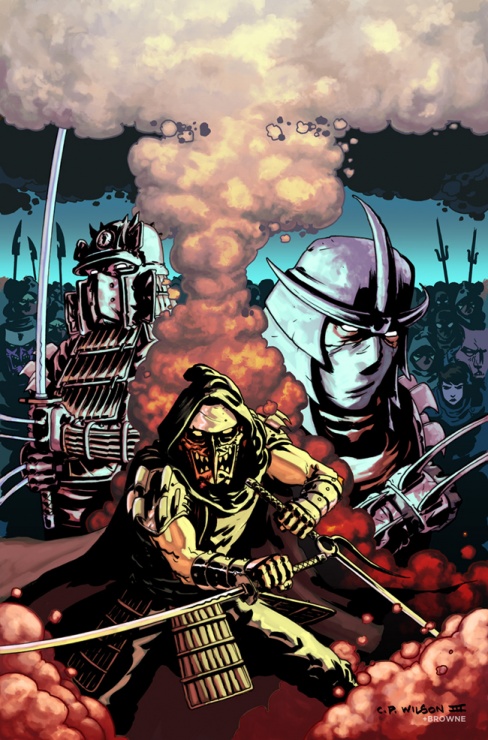
9. TMNT: Secret History of the Foot Clan
Why It Ranks (Brandon Burpee): One of the coolest parts of the TMNT title has been the way it ties into the micro series and mini series that have come to support it. This mini as no different. It did a superb job of filling in some of the details as it relates to Splinter and Shredder’s past and how they became such enemies. It also, as these minis/micros have done superbly, introduced us to some new faces that would come to be important to the series. Erik Burnham and Mateus Santolouco bring the A game here in what I honestly would love to see more of. The rich history of the Foot Clan is something that I think every fan of this new Turtleverse would agree is ripe with potential for great stories. Especially when you tie in their connection to Krang.
Continued below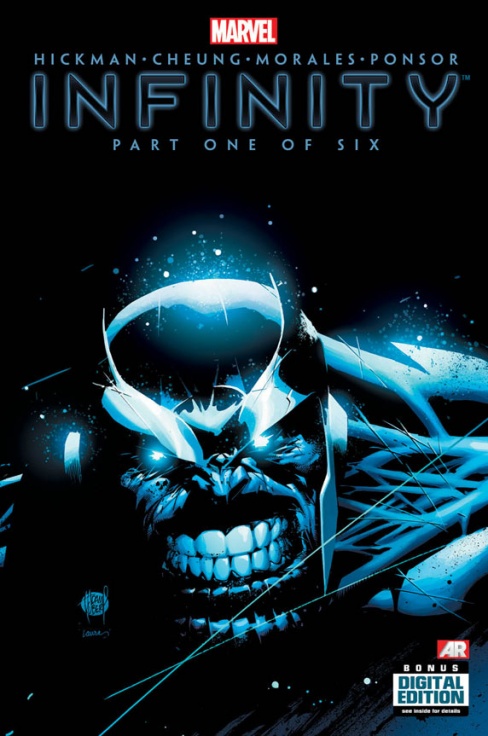
7 (tie). Infinity
Why It Ranks (Brandon Burpee): Infinity was everything I hoped it would be. It was exciting, filled with talent and starred some of the coolest characters in all of the Marvel Universe. It also left a sizeable impact as the Inhuman nation spread beyond the status quo that they’ve had for years. That wasn’t the only impact it had though as it established a floor plan of the powers in the universe, all the while being filled with brilliant art from a trio of artists in Jim Cheung, Jerome Opena and Dustin Weaver. Seriously, how amazing is that art team?
While the story wasn’t filled with allegory and sophisticated commentary, it was filled with a shit ton of fun.

7 (tie). Catalyst Comix
Why It Ranks (Vince Ostrowski): Joe Casey and a trio of under appreciated, but crazy-great artists are teaming up to give you nutzo comics and one of the best bangs for your buck, to boot. Casey revives the “Comics’ Greatest World” imprint and shoves a bunch of it all into one wall-to-wall action title. Through Frank “Titan” Wells, Casey explores the superhero psyche – how does a hero react when he’s an international public figure of note? With the “Agents of Change”, he revives a bonkers superhero team made up of quite the cast of memorable characters. “Dexterous” is the word I use to describe the approach to these stories. Casey switches up his voice several times over the course of a single issue, proving that he is one of comics’ greatest writers when it comes to injecting personality into even the captions themselves. The artistic dexterity of the title is inherent in the fact that Paul Maybury, Ulises Farinas, and Dan McDaid all share time telling these stories, yet it all fits together visually. These guys are all doing their own things, but their “things” are things that go well together and look like they come from the same universe. But that comment actually misses the forest for the trees, because it doesn’t highlight just how gorgeous the book is all the way through. Impactful, hyperkinetic, mind-expanding – this creative team is exactly what the name of the book implies: a true catalyst for the greatness of this superhero series.
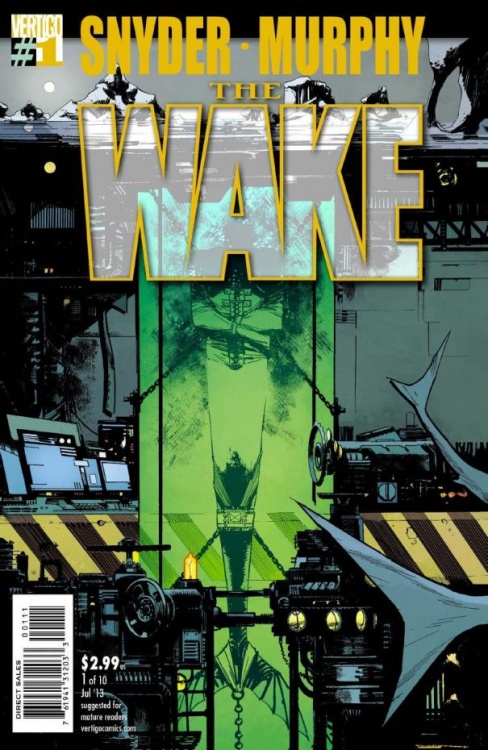
6. The Wake
Why It Ranks (David Henderson): “The Wake” has a curious effect: it’s only halfway done and yet I feel comfortable that it’s on this list purely because it feels like the story is complete. Well, the first half of the story is complete. With the fifth issue, Scott Snyder and Sean Murphy switched this series from underwater Aliens to something resembling a Fallout/Waterworld mix. And that’s precisely why it’s here, the scope in it’s storytelling. Elements of this series has reached from the cataclysm that turned to Mars in a barren, red rock to the origins of human flood myths and onward into a devastated future and yet it all revolves around the characters involved. Snyder has been proving his strengths as a writer “Batman” and even more so with “American Vampire”, but this may be his biggest work yet… and it’s a miniseries. Knowing the limitation of the space he has to tell the story has allowed Snyder to go to places that should feel unthinkable and make it work within the confines of the series. And that’s not to mention allowing Sean Murphy to stretch his artistic muscles in portraying the scope of this series in pencil and ink while also terrorising the characters in a claustrophobic slasher-style story with a murderous mermaid. You won’t see another one like this for a while and 2014 holds the other half of this series which will surely blow the lid off that year as well.

5. B.P.R.D. Vampire
Why It Ranks (Brian Salvatore): Sometimes projects are exactly as great as you hope they will be. When the artists known to fans as “the twins” (aka Fabio Moon and Gabriel Ba) were announced as co-writing (with Mike Mignola) and co-drawing an Anders-centric vampire story, Mignolaverse fans began to dream of what it would be. And it wound up being even better than expected. On the art side, seeing Ba and Moon collaborate so closely (even working on the same page at times) was a masterclass in how two artists can share a book without looking thrown together. On the story side, they set up Anders to be their own character to shepherd and develop as they please: a wanderer on the fringes of the Mignolaverse, having his own thoroughly creepy adventures. Their next mini can’t come soon enough.
Continued below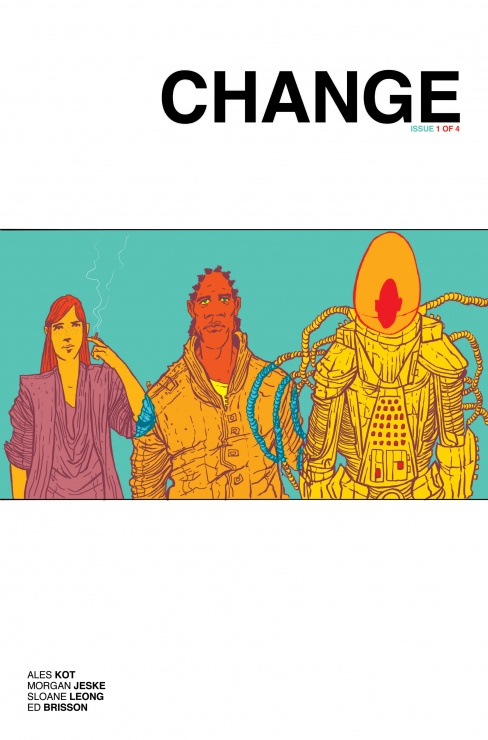
4. Change
Why It Ranks (Vince Ostrowski): I’ve read a ton of comics in my life, as have many of you, I’m sure. One of the rarest things in comics is to truly stick the landing on a story. Ales Kot and Morgan Jeske’s “Change” didn’t just stick its landing in its 4th issue, but actually changed the way that I looked at the 3 issues that preceded it. Issue #4 strengthened the entire concept with the way things came to a close and made re-reading issues 1-3 endlessly rewarding – thanks to Kot’s self-aware, hyper-consciousness style of storytelling and the inventive pop art of Jeske. What started out as a apocalyptic conceit viewed from multiple (very connected) points of view, became a very personal and affirming story by the end. At least, that’s the way I took it. In my write-up of Ales Kot as one of our breakout writers of the year, I called “Change” a catharsis. Well, that’s what it was for me. But the great thing about a story like “Change” is that it can mean something else to you. And those stories, are the best kinds of stories, if you ask me.

3. The Private Eye
Why It Ranks (David Harper): Even though it has since been completely taken over in my mind by the Hall & Oates track “Private Eyes” since I first saw this video, “The Private Eye” by Brian K. Vaughan, Marcos Martin and Muntsa Vicente was one of the biggest surprises of the year and undoubtedly one of the best comics as well.
When I say surprise though, I don’t mean a surprise in quality. “The Private Eye” is very much everything you’d expect from a comic crafted by these creators, with a little cherry on top given the complete creator-owned nature of it and its unique digital layout. It’s a surprise in the literal sense, as this book wasn’t really announced so much as it was dropped like a bomb on the comic industry, with one day panelsyndicate.com showing up and the next the first issue dropping on a pay-what-you-want paradigm.
Since then, the guerrilla nature of it has kept everyone on their toes, but the quality is uniform and the read is continuously exciting. You have Martin, one of the greats in comics over the past decade, providing career best work here, as his partner Vicente emphasizes and amplifies his work in all the best ways. The future is familiar in the hands of Martin, but it’s also bold and unreal, combining people with fish and tiger heads with streets dotted by Blockbuster Videos. BKV’s ideas for the future are endlessly entertaining as well – mass produced marijuana cigarettes, wifi having gone the way of laserdisc and people wearing very strange glamour masks – but it’s all wrapped in a most excellent murder mystery of sorts with all of the traditional BKV dialogue fun.
Ultimately, even just for the inventive, pay-what-you-want digital nature of this book, this book might make the list. The fact that it’s also an incredible, very rewarding reading experience? That elevates this book very easily to not just one of the best minis of 2013, but one of the best comics of the year, period.

2. Numbercruncher
Why It Ranks (Greg Matiasevich): What are the odds that you can calculate your way out of eternal limbo? That you can make the slimmest of slim chance of outsmarting the great divine calculator in the sky and reuniting with your love, separated from you far too soon by your own demise? One in a million? A billion? A billion trillion? For one young, brilliant mathematician, staying ahead of the Karmic Accountancy and agent Bastard Zane is just a matter of crunching the numbers. But for creators Si Spurrier and PJ Holden, putting together one of the best minis of the year had to have been much tougher than that. Numbercruncher is a clockwork story that reads one way the first time through, and completely different on the subsequent read. Throwaway panels, backgrounds, and dialogue turn out to be plot-turning moments just waiting to be activated. And even if you know that going in, the creators still keep you guessing until the last panel. And beyond. What are the odds you won’t like this mini? A zillion to one.
Continued below
1. Trillium
Why It Ranks (Matthew Meylikhov): In the wake of Sweet Tooth, the world was certainly missing some creator-owned goodness from Jeff Lemire. It’s not that his other writing was all that bad, but there’s something different present in the work that Lemire writes and illustrates; a different energy, a different appreciation for the medium, a uniquely different feeling.
But then Trillium arrived, and all was well. A love story, Trillium is an interesting sci-fi journey unlike anything Lemire has attempted before. Because you see, while Sweet Tooth often saw Lemire playing around with the capabilities of the medium, Trillium is him taking his talent to the next level. Each issue is something different; we’ve had flip-books, we’ve had issues that distort time, we’ve had hidden codes and symbols hidden in plain sight. Lemire is upping his game as a creative talent and it’s incredibly exciting to see him play around in the sandbox that he is clearly so passionate about.
So if you haven’t picked this book up in single issues yet, you’re easily missing out. It’s the most exciting release from the New Age of Vertigo yet, without a doubt.





